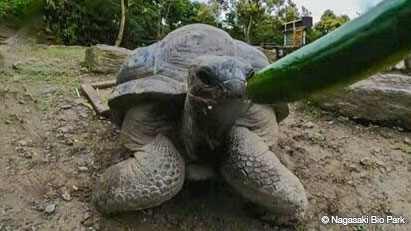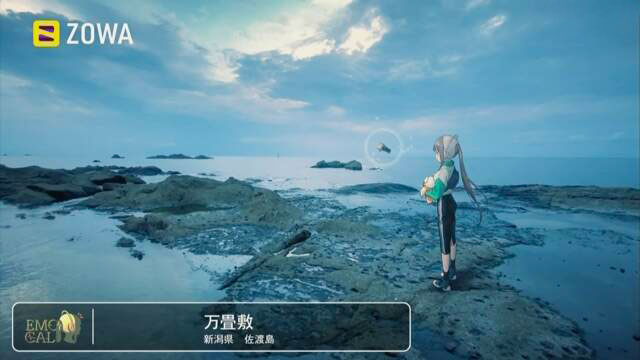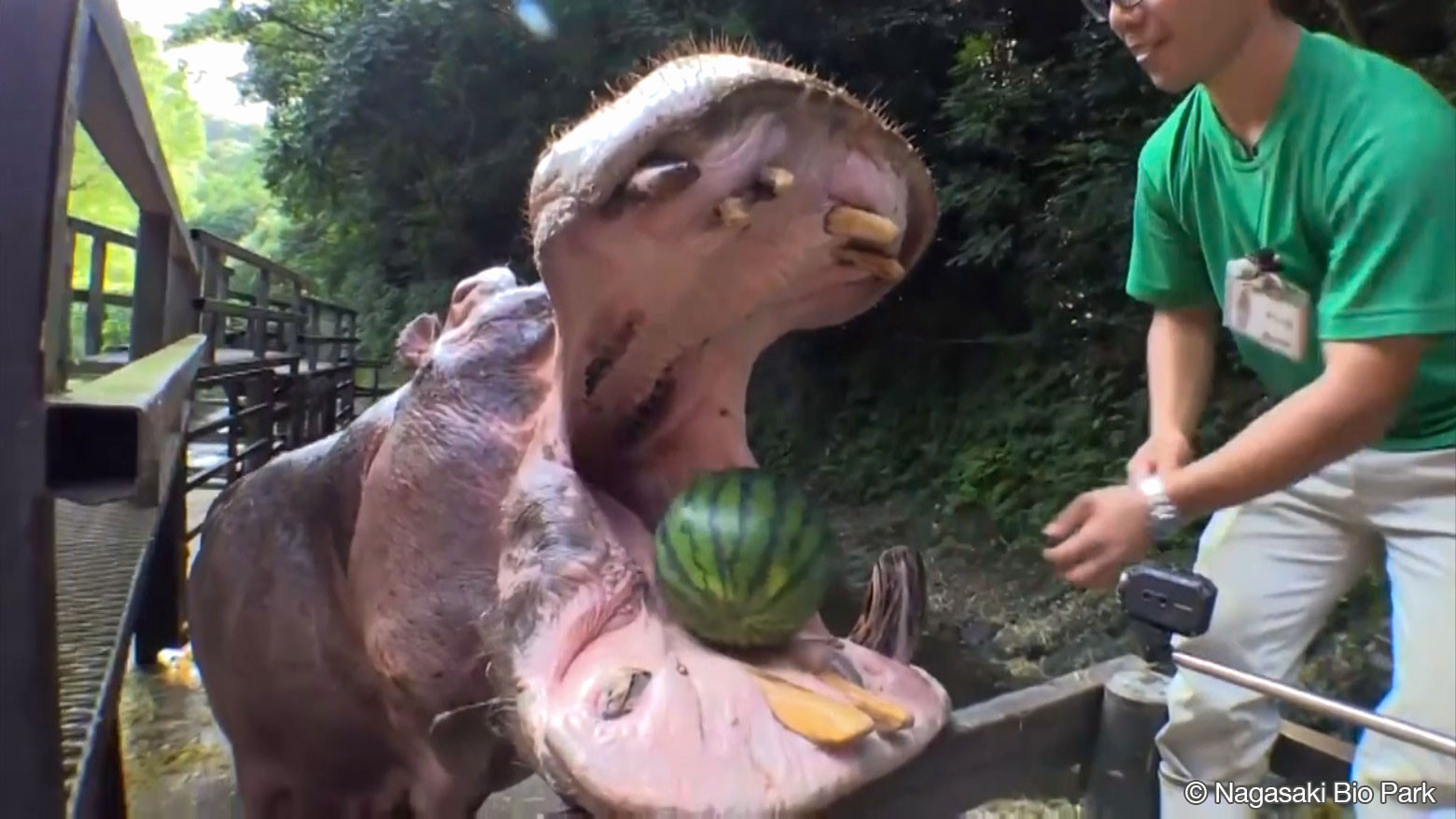Eight years ago, officials at Nagasaki Bio Park in southwestern Japan posted a video of a hippo eating a watermelon to YouTube. Little did they know that people would soon start raving about the sensation triggered by the sound of the juicy fruit popping in the beast's jaw.
Some of the viewers' comments included the acronym ASMR. The park staff discovered it refers to a whole genre of videos in which texture-laden sounds are said to resonate on a deeper level. Among the countless examples are people eating, or simply using their hands to manipulate everyday objects such as cellophane.
Hungry hippo racks up the hits
The park staff edited the title of their hippo video to include "ASMR", and it has since generated more than 160 million views. Even now, the tally rises by about 10,000 per day.
"It was a real surprise to see the count rise so rapidly," says Kamichika Kimitaka, a video producer at the park. "I think it was well-received around the world because unlike words, which would only communicate to Japanese people, the sound of the watermelons was understood by everyone."
Watch Video 01:45
The park has now made over 200 ASMR videos -- everything from the sound of giant tortoises enjoying cucumbers to capybaras munching on corn. Officials hope the online hits result in more visitors when Japan's borders are eventually fully reopened.

"We've mostly tailored our video content to Japanese people during the pandemic, but from now on we'd like to appeal to foreign visitors by once again focusing on ASMR," says Kamichika.
Sounds get around language barrier
Kyoto Seika University Professor Komatsu Masafumi is an expert in psychoacoustics. He says ASMR videos are popular because of the abstract way they trigger emotions. "We are able to experience reality through sound. These videos create a sense of immersion, and make us want more."
And he agrees with the staff at Nagasaki Bio Park. "They are distinct in that they don't require the use of language. The sounds make an impression on Japanese speakers and non-Japanese speakers alike," he says.
Officials at the Omi Tourism Board in Shiga Prefecture, western Japan, are also turning their attention to ASMR. They've produced a video of a chef cooking some of the prized local Wagyu beef on a griddle. It sizzles away, and a knife can be heard in surgical detail as it slices through the meat.

"ASMR videos don't rely on language, so I think they will appeal more to foreign tourists," says marketing official Naiki Mami. "We want to give them a vivid sample of the real thing -- from how the chefs cook their ingredients, to the sound of their knives being sharpened."
More parts of Japan selling with sound
A Tokyo-based production company is helping regional parts of Japan promote themselves with ASMR. One video features the calming waves of Manjojiki, a picturesque shoreline on Sado Island in Niigata Prefecture. And in another, the sound of cast metal wind chimes at a workshop in the City of Odawara, Kanagawa Prefecture, take center stage.

The production company does not charge a fee for the videos. Instead, it hopes to use all the online hits to help grow its user base. "There are plenty of places that aren't found in tourist guides, but are firm favorites with the locals," says Sumida Yoichi. "Sound opens the realm of imagination. It would be great if this initiative gets tourists to ultimately come and experience these places in person."


